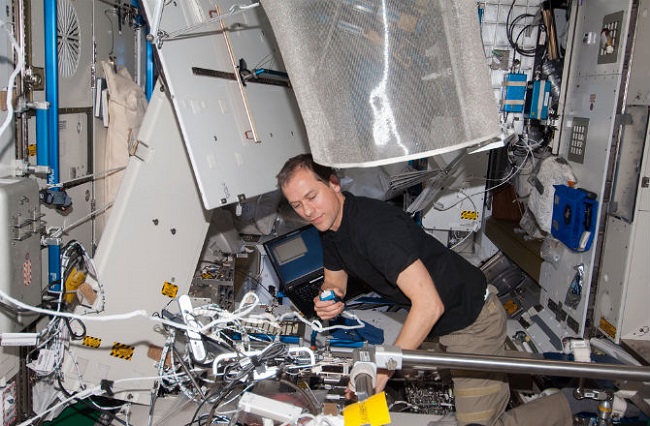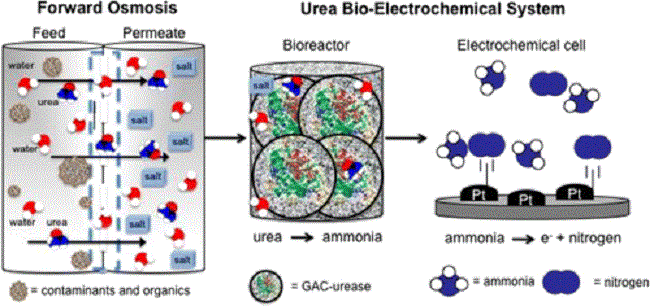
Sustaining life aboard a spacecraft is a shrewd game of resource management. Astronauts must maximize all resources, extracting every possible benefit before “waste” can truly be called waste. Given that human urine makes up half a spacecraft’s total waste deposit, recycling it is critical in prolonging life support. We’ve already established that astronauts’ drinking water is partially made from recycled urine, but recently, scientists have determined a way to convert the left over urea, a compound found in human urine, into fuel.
A pair of scientists from the University of Puerto Rico ─ Eduardo Nicolau and Carlos R. Cabrera ─ teamed up with NASA Ames Research Center to devise a new waste management system that salvages ammonia, before electrochemically oxidizes it to generate electrons and molecular nitrogen, essential fuel cell ingredients for energy.

Scientists can’t afford to simply eject pee into space
The process builds upon the concept of forward osmosis, the method of separating water from dissolved solutes, but incorporates a newly devised Urea Bioreactor Electrochemical (UBE) unit that recovers ammonia from the left over urea. “Although there have been previous attempts to develop urine bioreactors, they typically didn’t turn urine into a fuel cell for power. The idea with this new system is to both remove urea from wastewater and generate valuable components from human waste,” Nicolau explained to DNews.
The outcome of the experiment was highly positive; UBE successfully removed more than 80 percent of organic carbons from the urine and converted approximately 86% of the urea into ammonia. While the process of interfacing wastewater-recycling processes with bioelectrochemical systems was intentionally designed for space missions, the UBE is potentially applicable in waste water facilities here on Earth, claimed researchers. So don’t be surprised when this becomes a solution to the impending water crisis.
Via acs.org
Advertisement
Learn more about Electronic Products Magazine





